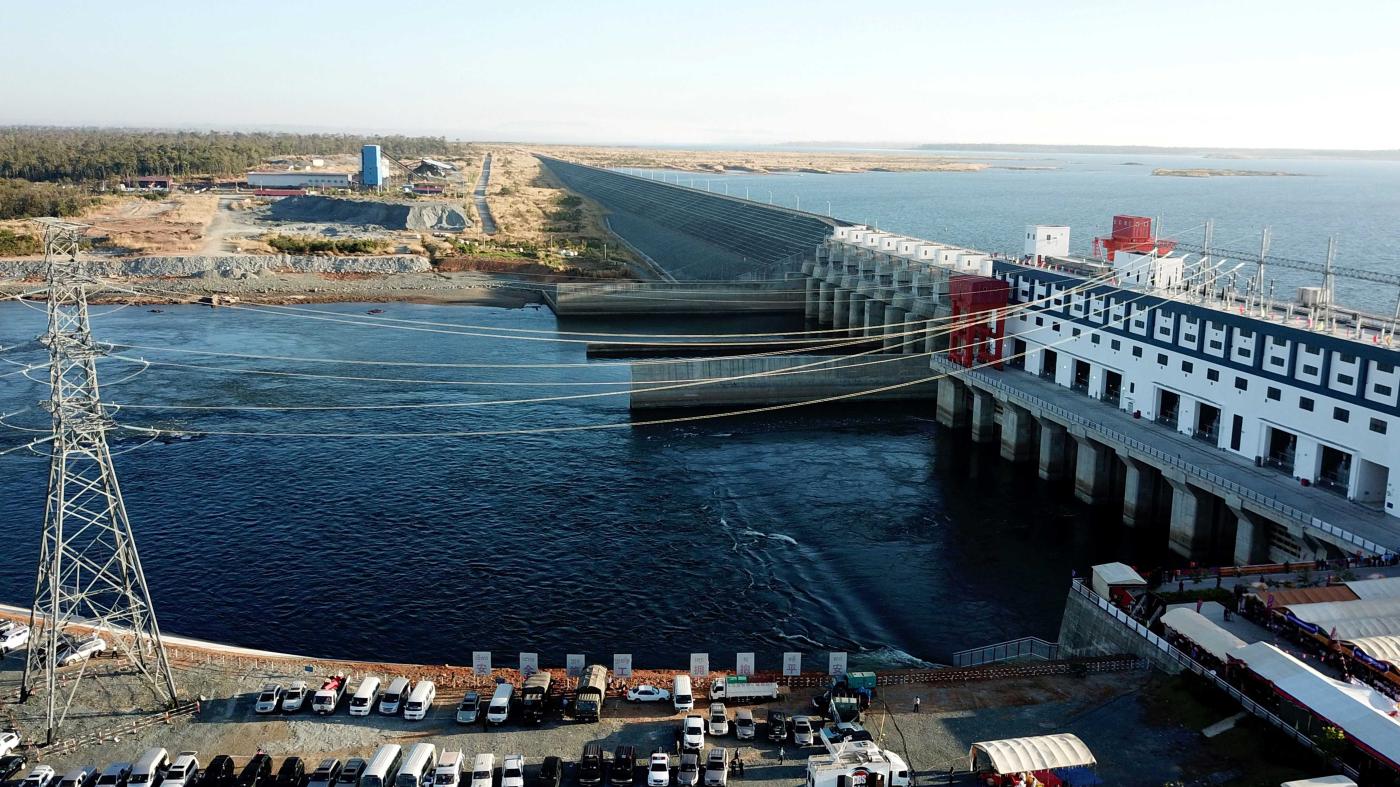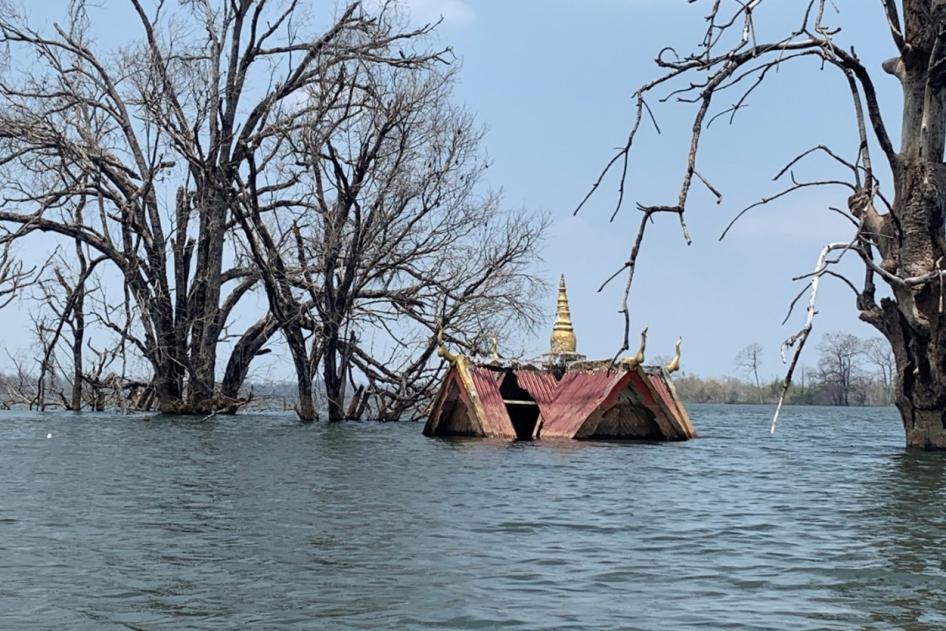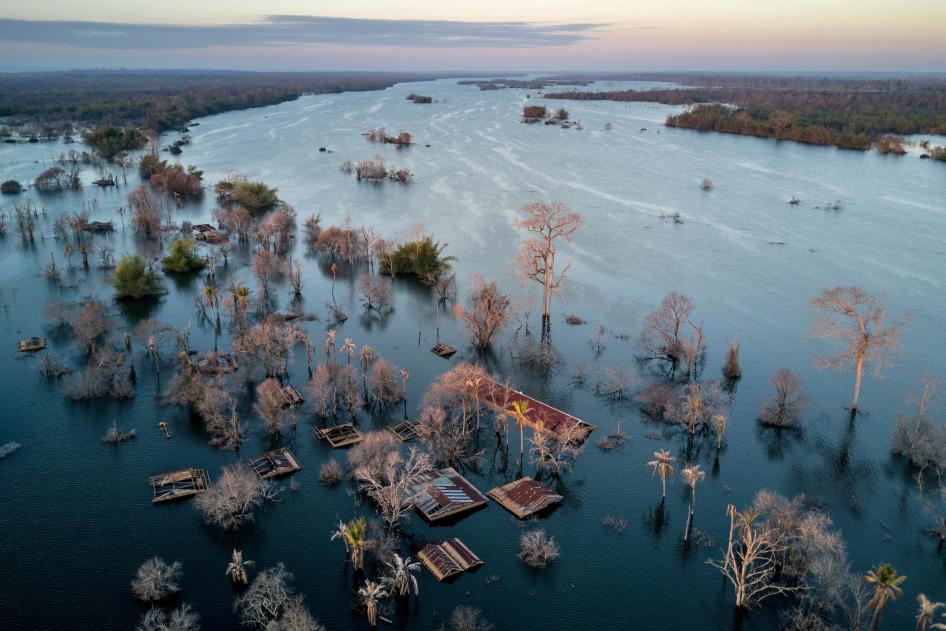How has the Lower Sesan 2 dam affected the region since its completion in 2018?
The Mekong River Basin is an enormous freshwater ecosystem with thousands of migrating fish species. By cutting off two rivers that were major tributaries to the Mekong, and by creating a huge artificial reservoir, the dam prevents fish from traveling up and down, disrupting their feeding and reproductive cycles. As a result, whole species have died and fishery yields have plummeted. Fish is a major part of Cambodians’ diet. Millions of people on the Mekong River system live off catching and selling fish. Today, the decline in fisheries is felt all over the country.
A 2008 environmental impact study that had predicted this was ignored. And local communities, who had opposed the dam from the start because they feared it would cause their income to collapse, were branded as troublemakers. They were threatened by Cambodian government officials and the Chinese state-owned power generation company responsible for building the dam. Thousands were forced to leave their homes when their fishing grounds and ancestral farming lands were flooded.
The dam has also flooded villages. What has this meant for the river communities’ lives and livelihoods?
About 4,500 to 5,000 people lived in the villages that were submerged by the dam. Many belong to Indigenous communities or ethnic minorities. Their food and income used to come from three sources. First, fish, which was their main source of protein and which they would sell to purchase necessities like nets or household goods. Second, from rice, vegetables, and fruit that they grew in the floodplains along the rivers. And third, forest products such as herbs, nuts, seeds, and tree resin. People were poor but self-sufficient.
Today, everything the dammed-up rivers provided – food, water, an income from fishing – is gone. If people want to fish, they have to travel because the area they were resettled to is far from any river. The soil where they live now is rocky, dry, and difficult to farm. It requires fertilizer they don’t have money for. And because the ground water is unfit for drinking, people have to buy water.
Some refused to resettle and now live on forest land to remain close to the water. But they, too, struggle to make a living. Where some families would catch 40 kilos of fish a night before the dam was built, they now don’t even catch two kilos. Large, meaty fish that can be sold for a good price have become rare. The fish that people catch today is so small, it’s often only good for making Cambodia’s traditional fermented fish dish called prahok.
Fruit and rice yields have also plummeted, as the fields are no longer fertilized by silt during the rainy season. And with the forests having been submerged, the income from gathering mushrooms, medicinal plants, and nuts is completely gone.
Did people receive any compensation?
Communities that were compelled to accept resettlement offers were either offered pre-fabricated houses or about US$6,000 to build new homes. But the compensation that was offered did not match the value of what they actually lost: fruit trees that were decades old, villages that they and their ancestors had lived in for generations, fields, graves, and religious shrines. Nor were people offered training in new skills that would enable them to generate an income, such as welding, woodwork, or electronic repairs.
What did it take to conduct the research for this report?
We started doing interviews on the ground in early 2019, when the effects of the dam had become evident. Since then and due to the Covid-19 pandemic, we have been following up with regular telephone calls.
But there were lots of other things we had to do in the meantime to corroborate our findings. We talked to fishery and environmental experts about hydroelectric power and greenhouse gas issues with reservoirs. We had to send water to environmental labs for testing to show that it was contaminated. We requested information from economists and the companies involved. We also had to review hundreds and hundreds of pages of environmental impact assessments to compare what had actually happened to what had been predicted.
Not only environmentalists but economists, too, had opposed the dam. On what grounds?
To determine the economic viability of a dam, grading systems compare its cost and the power it is expected to generate to the economic impact the additional generated electricity will have. Will it, for example, provide a reliable energy supply at lower costs?
When you compare losses to fishery income and the cost of displacement caused by this dam with the gigawatt hours the dam is supposed to generate, there are serious questions about whether it was worth the costs. Plus, electricity is still in short supply and unreliable in Cambodia.
Also, the country’s geography is not suited for hydroelectric power. The dam had to be so wide because the country lacks large mountains and gorges that could act as reservoirs and ensure the falling water creates sufficient pressure to power hydroelectric turbines. That in itself creates problems. When you dam up this much land, especially heavily vegetated land, all of that dead vegetation emits large amounts of carbon dioxide and methane – for years. Some hydroelectric dams – this one in particular – have carbon footprints that equal that of fossil fuel plants.
Why did the Cambodian government push ahead with this dam?
The dam is part of the Chinese government’s large-scale “Belt and Road Initiative” (BRI), a trillion-dollar investment and infrastructure project intended to spur development and advance Chinese foreign policy interests globally. Unlike loans from international financing institutions, Chinese government money usually comes without safeguards or obligations to protect the rights of vulnerable communities.
The human and environmental costs of BRI projects have been similarly high in other parts of Asia and in Africa. The Chinese government may be providing badly needed loans for infrastructure development, but it is also setting the stage for widespread abuses to occur by failing to ensure that the companies involved acknowledge the findings of environmental and social impact assessments and adequately compensate affected communities.
How can the harm that has been done be minimized?
Exposure of these abuses might lead the Chinese government to re-evaluate and renegotiate resettlement and compensation packages. After all, the Belt and Road Initiative is not only a development and foreign policy initiative, it is also meant to make Beijing look good on the world stage. As the majority owner of the company responsible for the construction and operation of the dam, the Huaneng Group should ensure that abuses are remedied. And going forward, the Industrial and Commercial Bank of China (ICBC), which provided the financing for the dam’s construction, should exercise more oversight over projects it finances.
Donors and international financing institutions should send a clear message that unless the concerns raised in this and other reports are addressed, the Cambodian government will struggle to get funding from them in the future.
The Cambodian government itself needs to reassess how it handles impact assessments for infrastructure projects, be they a road, an electricity line, or a power plant. The authorities need to offer appropriate compensation, create programs that give people new skills, and consult with the communities about alternative mitigation strategies such as aquaculture or fish stocking opportunities for the reservoir.
And lastly, Cambodia’s energy policy going forward cannot be centered around hydropower. The government will have to explore alternative energy sources.
*This interview has been edited and condensed.







